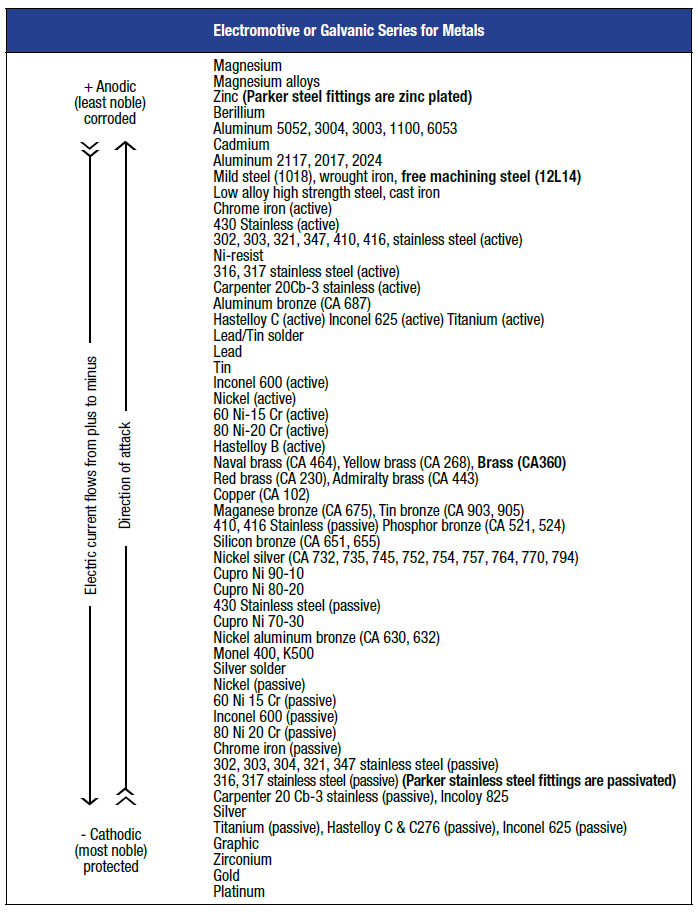Galvanic Corrosion Scale | Corrosion of Base Metals in Contact
The susceptibility of different base metals to corrosion while in contact depends upon the difference between the contact potentials or the electromotive voltages of the metals involved. The greater the potential difference is, the greater the tendency for corrosion. The metal with the higher potential forms the anode and is corroded. The larger the separation distance in the electromotive chart between the two metals in contact, the higher the contact potential and chances for corrosion.
For example, zinc and aluminum are a very short distance apart in the chart; therefore, the potential for corrosion when these two metals are in contact is very low. On the other hand, aluminum and passivated 316 stainless steel are far apart; hence, when in contact, the potential for corrosion is very high. Aluminum, being a more anodic metal, will corrode in this combination.
As a general guideline, if the metals are half the length of the chart or more apart, the combination should be avoided. Also, it is not a good idea to combine an anodic metal part with a thin cross-section, such as thin wall tubing, with a cathodic or less anodic metal part of a heavy cross-section, such as a fitting.
Example: A thin wall brass tube with a steel fitting is a better, although not ideal, combination than a thin wall steel tube with a brass fitting.

